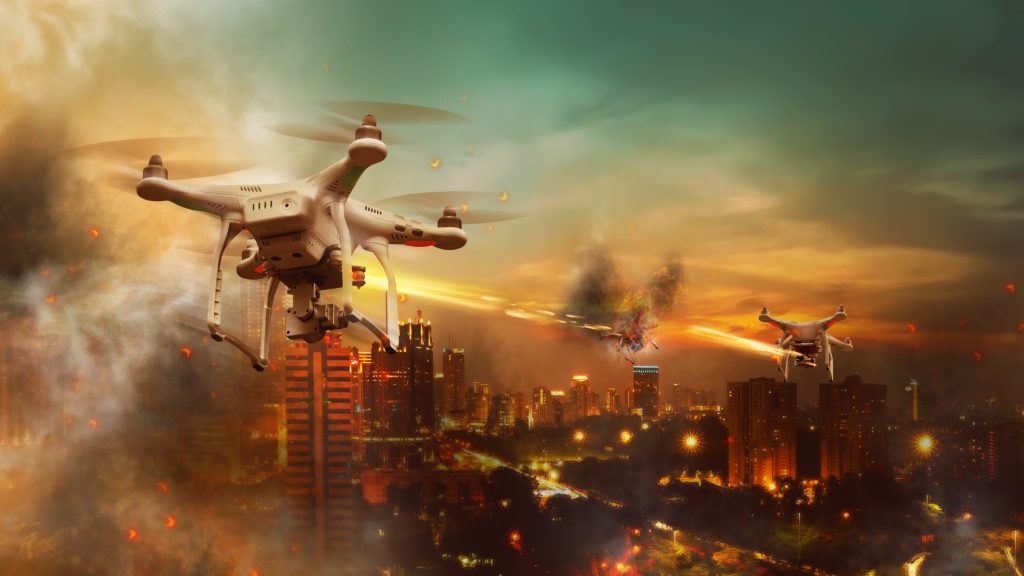
With birthrates plummeting to a global low of 0.75 per woman, South Korea is accelerating its military transformation, into a South Korean AI power force, by deploying drone swarms, robotic soldiers, and autonomous warships, to compensate to its vanishing human force.
The existential math says it all, by 2045, annual recruits will drop 45% below needs, forcing a reliance on “manned-unmanned teaming” (MUM-T) systems, such as explosive-carrying dones and AI-guided fighter jets.
Even though South Korea’s Hyundai and Hanwha are actively building robot medics and suicide sea drones, experts say that even advanced technology can’t fully substitute shrinking human troops – needed for maintenance and complex decision-making.
South Korea most technologically advanced leadership comes at the cost of the country’s fertility rate.
A record low fertility rate of of 0.75 children per woman – the world’s lowest – worsening its population crisis, jeopardizes national well-being and security. With troops’ numbers dropping from nearly 690,000 – early 2000s – to below 500,000 in 2024, military planners must adjust.
To maintain the current troop levels, there is a need for 220,000 new recruits every year, but the number indicate that 20-year-old men an important group for recruitment will fall below 120,000 by 2045.
The population decline threatens more than the country’s defense. With fewer fit citizens, South Korea may struggle to assist in disaster relief or peacekeeping missions, eventually weakening the South Korea AI framework act and its global security role.
From United Nations (UN) peacekeeping operations to humanitarian aid across Asia and the world, the country’s falling workforce might lower its reputation as a good ally during the global crisis.
Higher Korean AI, Lower Birth Rates
Is South Korea technologically advanced?
South Korea AI is investing heavily in automation and hybrid warfare strategies. The Army is actively testing unmanned ground vehicles, while companies like Hyundai Rotem and Hanwha Aerospace have developed robotic systems for logistics, surveillance, medical evacuation, and explosive disposal.
A new South Korea technology strategy known as manned-unmanned teaming (MUM-T) where human soldiers work alongside AI powered machines is being piloted. One field demonstration showed drones scouting contested areas, followed by helicopters able to coordinate with up to four drones at once. Some drones may even carry explosive payloads for precision or kamikaze-style attacks.
“The time for debating the need for unmanned and manned-unmanned systems has already passed,” said Chun In-bum, a retired general and former commander of South Korea’s Special Warfare Command.
He continued to say that “the integration of humans and machines — whether robots or drones — is now a defining trend in modern warfare.”
Sea, Air, and the New Reality
The Navy and Air Force are modernizing.
South Korea’s “Sea Ghost” program is developing a convoy of autonomous underwater vehicles (AUVs) and suicide unmanned surface boats. LIG Nex1’s mine detection vehicle and Hanwha Ocean’s new drone concepts aim to protect maritime borders with minimal human risk.
In the air, the KF-21 fighter is at the heart of a multi-phase plan to integrate reusable and expendable drones. These South Korean AI platforms will support missions ranging from reconnaissance to high-risk missile strikes, with manned aircraft acting as command hubs.
“In the future, unmanned assets will carry out autonomous missions, while manned aircraft will act as command nodes,” said Lt. Col. Gil Jong-seon, who oversees drone development for the Air Force.
As South Korea confronts its demographic estimate, its military is being reshaped not only by new technologies, but by the need to do more with fewer people. As automation grows, experts and the South Korean AI act caution that machines still require human hands.
“Someone still has to maintain, refuel, and rearm those systems,” said Chun. “Automation is a force multiplier — not a full replacement.”
Whether at home or abroad, South Korea advanced technology security role may click not just on its tech, but on how it adapts to a world with fewer citizens to serve.
Inside Telecom provides you with an extensive list of content covering all aspects of the tech industry. Keep an eye on our Intelligent Tech sections to stay informed and up-to-date with our daily articles.